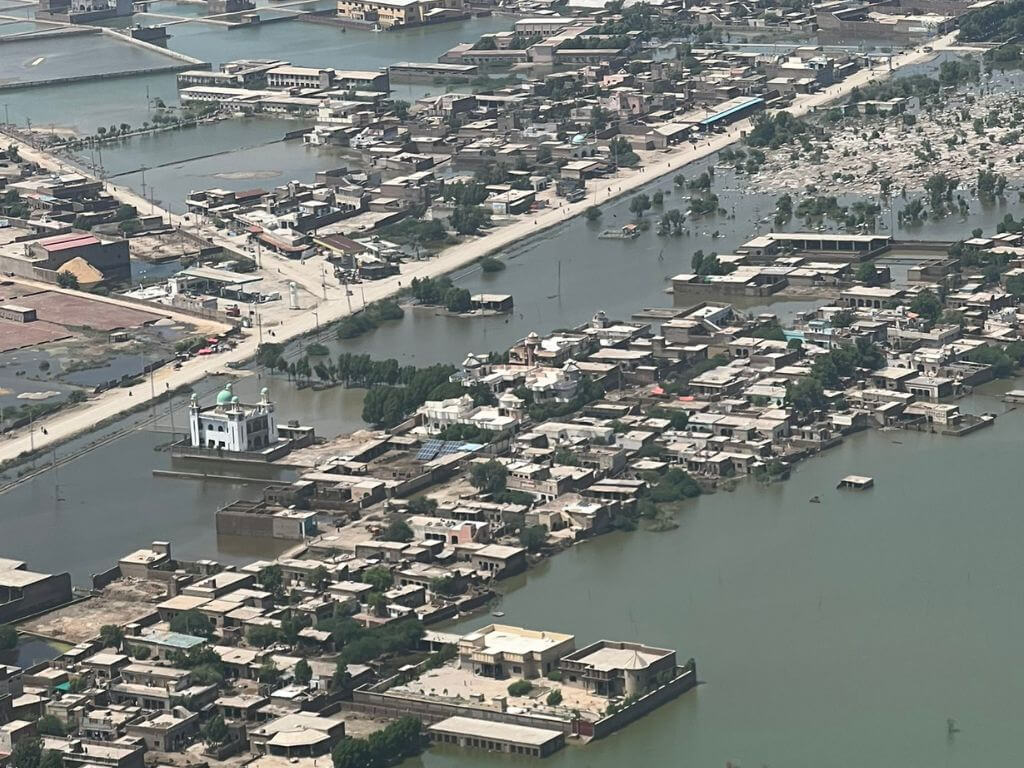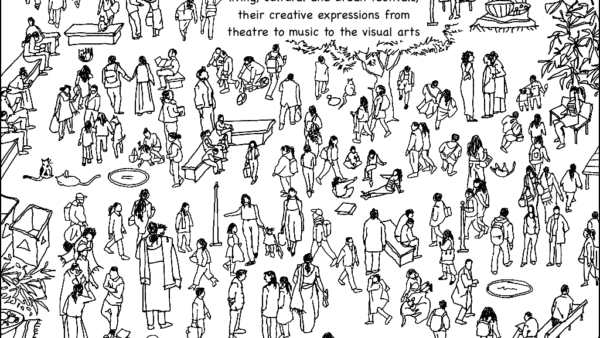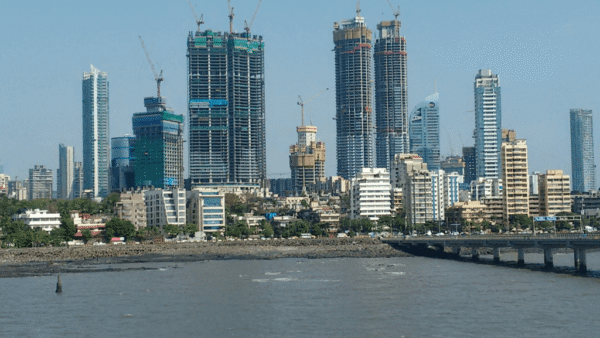Floods in South Asia have taken an urban turn.
It took five inches of rainfall in a day to convert parts of Bengaluru – the Silicon Valley of India – into an urban disaster. With an admixture of horror and amusement, people watched as affluent residents of gated communities were rescued from their waterlogged enclaves, along with their adorable pets, in boats and tractors. That an agrarian technology was required to rescue stranded urbanites in the software capital of India illustrated the power of water as it dissolved boundaries between the urban and the rural; software and hardware; gated communities and informal settlements.
Public discourse around recent floods in Bengaluru, however, is literally witnessing a watershed moment.
For decades, politicians have used rainclouds as a smokescreen for land-grabs, real estate corruption and planning failures, which have rendered Bengaluru’s urban watershed in a state of disrepair. Historically, the largely agrarian character of Bengaluru led to a system of harvesting rainwater through keres (tanks) interconnected by raja kaluves (canals)[1]. In urban Bengaluru, the raja kaluves, boxed and caged in concrete, have lost their prominence and ecological identity, morphing into storm water drains[2]. Meanwhile, of the 837 lakes reported to exist in Bengaluru Urban district, 88 lakes have been erased and parcelled into real estate enclaves and tech parks[3]. Fuelled by neoliberal finance, the shrinking of kaluves and the disappearance of keres, now intersects with heedless concretisation and changing precipitation to produce – borrowing from Daanish Mustafa – a hydro-hazardscape. What animates this hydro-hazardscape is social power, where illegal diversion of public land for private real estate is sanctified as ‘development,’ while the habitat of the urban poor, built with discarded artefacts and glued with desperation, are viewed as ‘encroachments’ and earmarked for erasure. The intensity of public discussion around the restoration of raja kaluves has led to the Bruhat Bengaluru Mahanagara Palike (BBMP) listing out illegal occupation of public waterways by private corporations and assuring their removal[5].
Geddesian city plan stresses importance of waterways
The discourse on urban watersheds and restoration of waterways intersects with Patrick Geddes ideas on water and cities, which he articulated 100 years ago across approximately 50 town plans in colonial India, written within a span of five years. Not all of his town plans get substantive attention, and scholars have largely engaged with his plans for Indore, Madras and Bombay. I want to draw attention to Geddes plans for the city of Dhaka (Dacca in colonial India), where he discusses the importance of khals – waterways/streamways – in urban planning.
Like the raja kaluves of Bengaluru, khals in the Bengal delta played an important ecological, economic, and cultural role. They were used for navigation and trade – connecting Calcutta (now Kolkata) to Dhaka – they teemed with fish, a staple in every Bengali home; they absorbed and distributed floodwaters and were used for carrying away waste. Geddes understood the circulatory and metabolic role of khals in the city of Dhaka. In his Report on Town Planning, Dacca (1917), Geddes recognised that the khals of Dhaka, were an “obvious and extreme example of the influence of natural drainage in determining the original layout of Indian towns” where settlements were conveniently located as close to them as the flood levels would allow. Geddes’ affection for khals is most vivid in his discussions on the Dholai Khal, twelve and a half kilometres of which was being proposed for filling up by a government engineer for “the improvement and sanitation of Dacca”, which would additionally yield 50 acres of land to the city. Geddes did not hide his distaste for such land-centric planning, as he noted:
Geddes went on to explain, that he understood that the colonial Government had lost interest in the Dholai Khal as they were looking to invest in new land and canal-based trade routes between Dhaka and Narayanganj, a port town and a jute trade hub, later dubbed the Dundee of Bangladesh. However, these calculations did not include how the decay of Dholai Khal had diminished local trade and business, and how its restoration and canalisation would revive local industries and commerce.
Dhaka’s neglected waterways the only ‘saviours’
Excavated in the 16th century for improving navigation, Dholai Khal was said to have wrapped Dhaka in “araipanch” (two and a half coils)”[9]. Apart from protecting the city as a moat, it also kept it dry by collecting excess rainwater in the monsoon. It is evident that Geddes’ suggestions on maintaining and deepening the canal had fallen on deaf ears. The neglect of Dholai khal continued, weakening its flood mitigation potential, and in the process reducing its significance to administrators. The colonial engineering paradigm which Geddes critiqued in 1917, had held sway and Dholai Khal was converted “into passageway by directing the water flow through concrete pipes laid below.”[10] Today, with only five percent of it left visible[11], Dholai Khal’s grandeur is only remembered in old photographs and paintings. As other wetlands and waterways followed suit, Dhaka began to witness frequent and more intense flooding. Today, the urban environmental movement in Dhaka is coalescing around the restoration of urban waterways and waterbodies. In 2017, a writ petition filed by the Bangladesh Environmental Lawyers Association (BELA) before the Supreme Court of Bangladesh demanded the recovery of 50 khals in the city. Subsequently the Dhaka South City Corporation (DSCC) has launched a canal recovery project for four out of the 11 endangered khals in its jurisdictional area[12]. It is believed that the revival of the four khals will save five million residents from waterlogging[13].
As Dhaka and Bengaluru endeavour to recover their lost waterways, Geddesian principles of conservative surgery – implying as little injury to people and nature as possible along with cost efficiency – could inform such efforts at healing the urban watershed. Empathy and solidarity with the urban poor is critical to such an exercise. Across South Asia, urban floods trigger discussions around ‘encroachment’ of public lands, a term frequently deployed to deflect blame on the urban poor and their habitats. While this myth is now slowly being dismantled, one cannot deny that healing an urban watershed will come at a cost. In a densely populated city like Dhaka, the recent restoration and expansion of a vast wetland – Hatir Jheel – for flood prevention and drainage, was attempted through participatory processes[14]. Yet, it did leave behind a trail of despair for poor inhabitants living in 1200 informal settlements around the wetland[15]. Sociologist Indra Munshi discusses Geddes’ sensitivity to concerns of displacement and relocation by pointing to his stringent critique of the proposal to displace residents of “Machhi Vad” (fisher-folks locality) in Surat (1915), arguing that in the “absence of a resettlement plans, the congestion was only shifted elsewhere.”
Understanding the profit aspect in conservation
The second aspect – cost efficiency – contradicts the dominant view of Geddes as a maverick idealist by town planners and engineers of his time. He was well aware that policy makers would align with his plans only if he could show them profit. This is illustrated in his plan for conservation of khals in Dhaka through pisciculture:
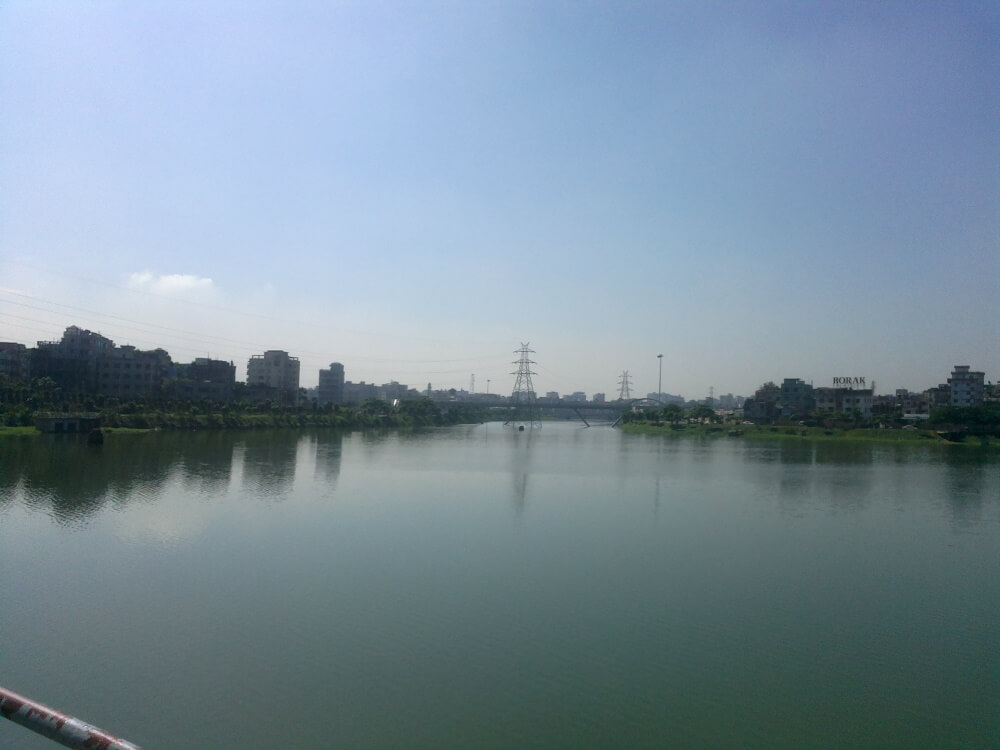
Photo: Creative Commons
One finds such ideas surfacing in his discussion of aquatic crops and livelihoods in his town plan for Jabalpur (1917) where he suggests the revenue potential for fisheries in Ranital Tank alongside the ongoing cultivation of water chestnuts. Water in the city, for Geddes, was not just a matter of aesthetics, ecology, and public health but also of livelihoods. Embedded in such thinking was the understanding that unless waterbodies in urban India were under some kind of use, their conservation remained tenuous, a lesson evident in the decline of urban waterways of Dhaka, and that of the keres (tanks) in Bengaluru and the pukurs (ponds) in Kolkata. In Balrampur, he critiqued the colonial engineering view of tanks as unsanitary breeding ground for mosquitoes. Instead, he argued for biological control through the introduction of ducks and fish, which would not only work towards malaria control, but also provide livelihoods for locals. Geddes had understood a central aspect of water conservation in India, the lesser the dependence on a waterbody, the less the people cared for it.
By articulating the economic rationale for restoration of Dhaka’s waterways, Geddes was also pointing at how neglect and sacrifice of local waterbodies for grand statist schemes aimed at boosting colonial commerce was debilitating local economy and ecologies. A hundred years later, the sceptre of capitalist growth continues to haunt local waterways. Grand schemes like SMART cities programmes creates high demand for land for developing private infrastructure like tech parks and IT hubs, which get built over marshlands in Chennai and raja kaluves in Bengaluru. The flood mitigation and groundwater percolation aspects of these waterbodies get undervalued, along with the cultural and ecological life they sustain. The perverse prioritisation of the demands of global capital over local economy and ecology remains unresolved today, as it did in Geddes’ time. Urban floods are produced out of such misplaced priorities.
Urban waterways was not exclusively understood in the context of the water they circulated, the economy they sustained, and the ecology they nurtured, but also from matter they carried. Sediment and silt constituted urban waterways, and the khals of Dhaka carried sewage. Geddes was prescient in his understanding that the sewage enriched silt of Dhaka’s khals could be used for fertilising horticultural gardens and tree plantation on the bunds. Deepening of khals, therefore, would not only enable better management of floodwater during the monsoon season, but the silt dug out of the khals would be productively repurposed. The recycling of ‘waste’ was central to his biocentric approach to urban nature, which he hoped would replace the dominant mechanocentric view of his time which failed to appreciate the interconnectedness between people and nature.
Two years before Geddes passed away, his biocentric worldview, which led him to conceptualise the recycling of sewage and silt from urban waterbodies, witnessed a remarkable beginning in the Bengal Delta, on the eastern fringes of the city of Kolkata. In 1930, a local landlord and fish farm owner, Bhabanath Sen, began to let Calcutta’s wastewater into his fishponds. The success he witnessed with fish growth and productivity laid the foundation for a globally celebrated example of urban sustainability – the East Kolkata Wetlands. Today, a vast waterscape of 264 fishponds recycles 750 million litres of sewage and wastewater, and where 50,000 fisherfolk and vegetable farmers turn excrement into 10,000 tonnes of fish and 50,000 tonnes of vegetables[18]. While ponds are disappearing at an alarming rate in the rest of Kolkata city, the managers of EKW, a Ramsar Site, continue to resist real estate incursion, ensuring that the wetlands cushion floods in a city where rainwater can no longer find its way out.
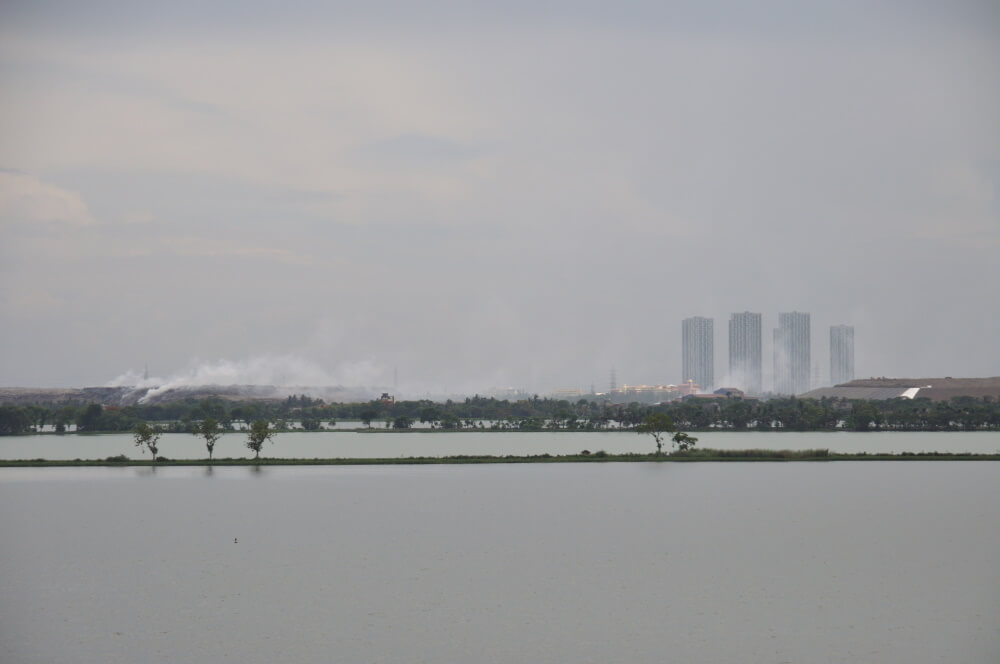
Photo: Creative Commons
Restoration of urban watersheds through participatory dialogue
Revisiting Geddes in the age of climate crisis is not an exercise in nostalgia, but of prescience. That waterways and waterbodies are critical to mitigating urban floods is a given. What matters is how we go about restoring the urban watershed. This is where Geddesian approaches such as diagnostic survey and conservative surgery remain relevant. Efforts at restoring an urban watershed should be guided through participatory dialogue built on empathy and solidarity instead of authoritarian enforcement. Questions of environmental and social justice are inseparably entangled. The urban poor, mostly belonging to marginalised caste groups, suffer the most from floods and yet they are made to bear responsibility for their plight. Their right to shelter and housing is a prerequisite to any discussion on fixing urban watersheds.
Geddes also understood that deepening people’s connection with urban waterbodies – tanks, ponds, rivers, canals – was central to their conservation. If urban waterbodies do get restored, then how does one go about sustaining their management? The answer to this question lies in understanding how these waterbodies nurture cultural and economic life. As the EKW illustrates, the question of livelihoods is central to the conservation of urban wetlands and waterways.
Current debates on restoration prioritises questions of aesthetics, hydrology and ecology. It is important that questions of livelihood also get a place at the table. As Geddes clearly understood, our urban waterbodies are constituted and conserved through practices, habits, and rituals – fishing, bathing, foraging, praying, to name a few. In the last few decades, conservation of urban wetlands through fencing and policing have often discouraged such practices. The late ecologist Dhrubajyoti Ghosh, credited with getting the EKW designated as a Ramsar site, believed that “it is people and not just policies, that protect wetlands.” Geddes’ writings reveal, that almost a hundred years ago, he too had arrived at a similar conclusion.
This insight should guide efforts at restoring urban watersheds. Flood mitigation is not just about protecting and reclaiming waterbodies, it is also about reviving social relationships that sustain them.
Amitangshu Acharya is a Lecturer in Water Governance at the IHE Delft Institute for Water Education, the Netherlands. The views expressed in this article are his own and not necessarily of his employer.
Cover photo: Ali Hyder Junejo/ Creative Commons

